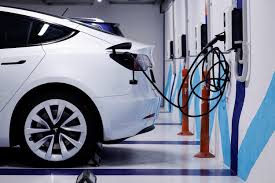Ethiopia is experiencing a sharp acceleration in electric vehicle adoption, within the number tripling from 4,600 in early 2023 to 14,000 EVs in early 2025 in Addis Ababa, according to the country’s energy outlook.
Electric vehicles accounted for more than 60% of all new car registrations in 2024, reflecting a shift driven as much by policy as by market trends.The government has effectively blocked the importation of fuel-powered vehicles by halting the allocation of foreign currency for their purchase.Although no formal legal ban exists, the currency restriction, coupled with high import taxes on used internal combustion engine (ICE) vehicles, has made Internal Combustion Engine (ICE) vehicle imports ‘practically unfeasible’.
“The pace of EV adoption could be influenced by changes in government policy, shifts in global battery prices, improvements in charging infrastructure, and consumer acceptance of EVs. If incentives are reduced or supply chain challenges emerge, EV adoption may progress more slowly than anticipated,” the report states.
The de facto ban is part of the country’s broader strategy to reduce the country’s US$4 billion annual fuel import bill, ease pressure on its foreign currency reserves, and transition toward a cleaner transportation powered by domestically produced electricity. Ethiopia’s grid relies heavily on hydro-electric power, giving the country a comparative advantage in electrifying transport.
The national car fleet is projected to grow from 320,000 in 2024 to 415,000 by 2030, with EVs expected to account for 113,000 units, about 28% of all cars on Ethiopian roads. As older ICE vehicles are retired and domestic assembly scales up, Ethiopia’s transport landscape is set to be rapidly reshaped by electrification. Meanwhile, fuel-powered motorcycles are being phased out in Addis Ababa, and electric buses are beginning to roll out in the city’s public transport fleet.
To support the shift, Ethiopia has also introduced sweeping fiscal incentives such as the 2022 directive that eliminated VAT, excise tax, and surtax on electric vehicle imports and lowered customs duties to 15% for fully built vehicles and 5% for semi-knocked-down units. Completely knocked-down kits assembled locally are exempt from customs duties altogether, a move meant to promote domestic EV manufacturing.
In August 2024, the government revised its tax policy again, reintroducing a 15% VAT on EVs while further reducing customs duties to 5%. The updated structure reflects an effort to balance obtainable revenue with continued support for EV affordability and local assembly.
Despite the surge in electric vehicle adoption, Ethiopia’s charging infrastructure remains critically underdeveloped and scarce. The lack of a widespread, dependable charging network threatens to stall adoption momentum and risks alienating early adopters who face daily uncertainties.
Ethiopia’s Petroleum and Energy Authority has approved a directive establishing a regulatory framework for electric vehicle charging systems, including licensing, tariffs, power supply standards, and security. Charging stations will be installed every 50 to 120 kilometers nationwide as part of a broader government plan to transition public and government vehicles from fuel to electric power. Despite the progress, affordability remains a hurdle.
Even with exemptions, EVs in Ethiopia remain more expensive than used ICE vehicles, particularly for lower-income consumers. Continued growth will likely depend on further financial mechanisms, expanded charging access, and public education on EV benefits.


